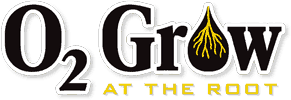 A horticulturist must keep many variables that pertain to a hydroponic system’s nutrient solution in check. The nutrient concentration (usually expressed in PPM or EC), pH and temperature of the solution are all crucial factors that influence the way a plant will respond to a nutrient solution. Another variable that can make or break a hydroponic system’s success is the dissolved oxygen content of the nutrient solution. Dissolved oxygen in a liquid refers to the oxygen that is not chemically combined. Put another way, dissolved oxygen is not the oxygen chemically bound to make water (H2O), but, rather, is the molecular oxygen that can be found in-between the water molecules. It is actually the dissolved oxygen content of water that governs the water’s ability to support aquatic life.
A horticulturist must keep many variables that pertain to a hydroponic system’s nutrient solution in check. The nutrient concentration (usually expressed in PPM or EC), pH and temperature of the solution are all crucial factors that influence the way a plant will respond to a nutrient solution. Another variable that can make or break a hydroponic system’s success is the dissolved oxygen content of the nutrient solution. Dissolved oxygen in a liquid refers to the oxygen that is not chemically combined. Put another way, dissolved oxygen is not the oxygen chemically bound to make water (H2O), but, rather, is the molecular oxygen that can be found in-between the water molecules. It is actually the dissolved oxygen content of water that governs the water’s ability to support aquatic life.
Scientists often use the dissolved oxygen content to gauge the health of streams, rivers, and lakes. In nature, low dissolved oxygen content can lead to a catastrophe for an aquatic ecosystem. The same holds true for a hydroponic nutrient solution. A hydroponic nutrient solution with low dissolved oxygen content is an open invitation for anaerobic pathogens, such as root rot. More often than not, a hydroponic grower doesn’t get a full blown pathogen attack, but, instead, experiences slowed growth rates or smaller yields because the dissolved oxygen content of the hydroponic system is not maximized.
